Is Chinese Food Healthy for You?
When you’re wondering whether Chinese food is healthy for you, it’s essential to examine the ingredients and cooking methods typically used in these dishes. Chinese cuisine is vast, covering numerous regions and styles, each with unique ingredients and culinary techniques. Let’s explore how Chinese food can fit into a healthy lifestyle.
Nutritional Value of Common Ingredients
Chinese cuisine incorporates various foods, many of which are packed with nutrients. Here are some components often found in Chinese dishes:
- Vegetables: Dishes often feature a wide array of vegetables, including bok choy, broccoli, and bell peppers. These veggies are rich in vitamins and minerals.
- Lean Proteins: Common proteins include chicken, shrimp, and tofu. These sources can provide essential proteins without high saturated fats.
- Whole Grains: While white rice is popular, many dishes can be made with brown rice or quinoa, which offer more fiber and nutrients.
- Healthy Fats: Traditional Chinese cooking uses oils like sesame or peanut oil, which can be healthier options compared to some other fast-food choices.
Health Benefits of Chinese Food
Eating Chinese food can offer various health benefits, particularly when you choose wisely. Here are some advantages:
- High in Antioxidants: Many dishes feature garlic and ginger, known for their antioxidant properties, which may help combat inflammation.
- Fiber-Rich: The inclusion of vegetables and whole grains can contribute to your daily fiber intake, aiding digestion.
- Balanced Meals: Traditional meals often include a balance of proteins, vegetables, and carbohydrates, providing a more nutritious option than many fast food alternatives.
Common Misconceptions
Despite the potential health benefits, some misconceptions persist about Chinese food. Here are a few points to consider:
- All Chinese Food is Unhealthy: While some dishes can be high in sodium and calories (e.g., General Tso’s chicken), there are many lighter options available.
- All Chinese Restaurants are the Same: Not all Chinese restaurants prioritize healthy ingredients. Look for establishments that focus on fresh, whole foods.
- Rice is Always Bad: While white rice has a higher glycemic index, opting for brown rice or wild rice offers more health benefits.
Helpful Tips for Eating Chinese Food
If you’re looking to enjoy Chinese cuisine while maintaining a healthy lifestyle, consider these tips:
- Choose steamed dishes over fried to reduce calorie intake.
- Request for less sauce or look for dishes with lighter sauces, such as soy or vinegar-based options.
- Order family-style and share dishes to control portion sizes.
- Incorporate more vegetable dishes to boost your nutrient intake.
Special Dietary Considerations
If you have specific dietary needs, Chinese food can still accommodate you. Many restaurants offer options for:
- Vegetarians: Dishes like vegetable fried rice or tofu stir-fry can be satisfying and nutritious.
- Gluten-Free Diets: Ask for dishes prepared without soy sauce or opt for rice-based options.
- Low-Carb Diets: Focus on meat and vegetable dishes while avoiding rice or noodles.
Chinese food can indeed be healthy for you when you make informed choices. Pay attention to the dishes you select, and opt for meals rich in vegetables and lean proteins. Dive deep into the diverse world of Chinese cuisine, and you may discover delightful meals that nourish your body.
For more insights on healthy eating and Chinese cuisine, check out Healthline or Eat Right.
The Nutritional Value of Common Chinese Dishes
Chinese cuisine offers a diverse array of flavors, textures, and ingredients, making it both enjoyable and nutritious. Understanding the nutritional value of common Chinese dishes can help you make informed choices. Here, we explore the nutritional benefits of popular dishes you might find at your favorite local restaurant or while cooking at home.
Stir-Fried Dishes
Stir-frying is a popular cooking method in Chinese cuisine. It retains the nutrients in vegetables and allows for minimal oil usage. Here are a few commonly stir-fried dishes and their nutritional highlights:
| Dish | Main Ingredients | Nutritional Benefits |
|---|---|---|
| Chop Suey | Mixed vegetables, meat (commonly chicken or shrimp) | High in fiber, with vitamins A and C from vegetables. |
| Vegetable Stir-Fry | Broccoli, bell peppers, carrots, soy sauce | Rich in antioxidants and low in calories, promoting heart health. |
| Kung Pao Chicken | Chicken, peanuts, chili peppers | Source of protein; peanuts add healthy fats and nutrients. |
Soups and Broths
Soups are a staple in Chinese cuisine, and they can be incredibly healthy. They often contain a variety of vegetables, proteins, and broth that can be comforting and nutrient-rich.
- Hot and Sour Soup: Contains mushrooms, tofu, and bamboo shoots, providing fiber and protein, along with vitamins and minerals.
- Egg Drop Soup: Made with broth and eggs, it offers protein and can be a low-calorie choice.
- Wonton Soup: Featuring dumplings and vegetables, it is a great source of carbohydrates and proteins.
Rice and Noodles
Carbohydrates are an essential part of any diet, and rice and noodles are typical staples in Chinese meals. Here’s a breakdown of common rice and noodle dishes:
| Dish | Main Ingredients | Nutritional Benefits |
|---|---|---|
| Fried Rice | Rice, vegetables, eggs, sometimes meat | Can be energy-dense, but opt for less oil to keep it light. Mix in vegetables for added fiber. |
| Lo Mein | Noodles, vegetables, soy sauce, and often meat | Good source of carbs; add extra vegetables for more nutrients and lower calories. |
| Rice Noodle Soup | Rice noodles, broth, various toppings | Gluten-free option packed with nutrients if topped with vegetables and proteins. |
Dumplings and Buns
Dumplings and buns are not just delicious; they can also be nutritious if prepared mindfully. They often combine various proteins and vegetables within the dough.
- Steamed Dumplings: Filled with meats and vegetables, they can provide balanced nutrition.
- Baozi (Steamed Buns): These can be made with whole grain flour, providing more fiber.
- Potstickers: Pan-fried dumplings that can be a delightful treat; when steamed rather than fried, they are healthier.
Protein Sources
Many Chinese dishes include protein sources, which are vital for muscle growth and overall health:
- Tofu: A great plant-based protein that is low in calories.
- Chicken and Fish: Lean meats; opt for steaming, boiling, or stir-frying for healthier preparation.
- Pork: Generally flavorful but choose lean cuts to keep saturated fats low.
Understanding the nutritional value of common Chinese dishes enables you to enjoy a balanced meal, benefiting from the variety of flavors and textures while taking care of your health. For more insights on Chinese cuisine’s health benefits, check out Healthline or visit Medical News Today.
Choosing Healthier Options When Dining Out
Dining out is often a delightful experience, but it can also challenge your commitment to health. With a few smart choices, you can enjoy delicious meals without compromising your well-being. Here are practical strategies to consider when opting for healthier options.
Understanding Menu Language
Restaurant menus can be tricky, filled with terms that sound enticing but may not be the healthiest choices. Understanding the language can help steer your decisions. Here are some tips:
- Look for “grilled” or “baked”: These methods usually mean less oil and fat.
- Avoid “fried” or “crispy”: These dishes often absorb unhealthy fats.
- Choose “fresh” or “light”: These descriptors usually indicate fewer calories.
Portion Control
Portion sizes at restaurants can often be larger than what you might serve at home. To manage this:
- Share dishes: This allows you to taste more while controlling portions.
- Ask for a half-portion: Many places will accommodate this request.
- Take leftovers: Don’t hesitate to ask for a to-go box and save half for later.
Choosing Wisely
When faced with a multitude of options, be strategic in your choices:
- Start with a salad: Choose dressings on the side to limit added calories.
- Opt for vegetable-based sides: They are usually lower in calories and packed with nutrients.
- Pick whole grains: If offered, choose brown rice, quinoa, or whole wheat options.
Be Mindful of Beverages
Your drink choices can add hidden calories:
- Skip sugary drinks: Choose water, herbal teas or seltzer with a splash of citrus.
- Limit alcohol: If you drink, opt for lighter options like a glass of wine instead of cocktails.
Special Diet Considerations
If you’re following a specific dietary plan, don’t hesitate to communicate with your server:
- Vegetarian or vegan: Most restaurants can accommodate by modifying dishes.
- Gluten-free: Many places offer dedicated gluten-free menus or options.
- Low-carb or low-calorie: Ask for modifications or recommendations suited to your needs.
Balance Your Plate
Strive for a balanced meal by including a variety of food groups:
| Food Group | Examples |
|---|---|
| Vegetables | Broccoli, Spinach, Carrots |
| Proteins | Grilled Chicken, Fish, Tofu |
| Whole Grains | Quinoa, Brown Rice, Oats |
By incorporating these groups, you ensure a nourishing meal.
Research Before You Go
In today’s digital age, researching restaurants beforehand can provide insight into their menu. Many establishments have their menus available online. Sites like Eat This, Not That offer tips on choosing healthier options and what to look for when dining out.
Moreover, apps like Yelp can help you read reviews about healthier menu choices and dishes that have delighted previous diners.
Don’t Forget About Desserts
If you have a sweet tooth, opt for lighter dessert options:
- Share a dessert: Savor the flavor without overindulging.
- Choose fruit-based options: They typically offer sweetness without empty calories.
- Skip it altogether: Sometimes just appreciating the meal is enough!
By applying these strategies, you can dine out without straying from your health goals. Making informed choices helps you enjoy the experience while feeling good about what you eat. Remember, it’s all about balance!
For more tips on maintaining a healthy lifestyle while enjoying meals out, visit Verywell Fit for some great advice and resources.
The Role of Vegetables in Chinese Cuisine
Chinese cuisine is renowned for its intricate balance of flavors, textures, and ingredients. Among these, vegetables play a crucial role in defining the essence of many traditional dishes. They not only enhance the flavor but also contribute significantly to the health and nutritional value of meals. Understanding the role of vegetables in Chinese cooking can provide insight into the culinary landscape and its broader benefits.
The Diversity of Vegetables in Chinese Cuisine
Chinese cuisine boasts an impressive array of vegetables, each adding unique characteristics to dishes. Common varieties include:
- Broccoli
- Baby bok choy
- Chinese cabbage
- Snow peas
- Eggplant
- Bell peppers
- Carrots
- Mushrooms
This diversity not only contributes to varied flavors but also combines different textures, making each dish a feast for the senses. Whether stir-fried, steamed, or served fresh, these vegetables form the backbone of countless recipes.
Nutritional Benefits
Vegetables are low in calories yet packed with essential vitamins, minerals, and antioxidants. Here are some critical health benefits they offer:
| Vegetable | Nutrients | Health Benefits |
|---|---|---|
| Broccoli | Vitamin C, Vitamin K, Fiber | Supports immune function and bone health |
| Baby Bok Choy | Calcium, Iron, Vitamin A | Enhances bone health and vision |
| Bell Peppers | Vitamins A, C, Folate | Aids in skin health and boosts the immune system |
| Mushrooms | B Vitamins, Selenium | Promotes healthy cell function and boosts energy |
These vegetables into your diet can lead to long-term health benefits, making them integral to traditional Chinese meals.
Cooking Methods Influence Cooking Techniques
The way vegetables are prepared in Chinese cuisine significantly influences their health benefits. Common cooking methods include:
- Stir-Frying: This quick method retains nutrients while enhancing flavors. A hot wok allows for swift cooking, preserving the crispness and vibrancy of vegetables.
- Steaming: Ideal for maintaining nutrients, steaming vegetables like bok choy and broccoli highlights their natural flavors and colors.
- Boiling: Feasible for soups and broths, though it’s essential to minimize cooking time to keep nutrients intact.
Each technique not only influences the health aspects of vegetables but also enhances their inherent flavors.
Regional Variations and Seasonal Availability
Different regions in China utilize various vegetables based on local agriculture and traditions. For instance:
- In Sichuan cuisine, spicy stir-fried eggplant is popular, showcasing the vibrant flavor of the region.
- Shanghai style often features sweet, tender greens like Shanghai bok choy, emphasizing freshness.
- Northeast China incorporates root vegetables due to their heartiness, making dishes satisfying during harsh winters.
This regional diversity encourages seasonal eating, promoting the health benefits of consuming fresh produce.
Vegetables as a Centerpiece in Vegan and Vegetarian Dishes
There is a growing interest in plant-based diets worldwide, and Chinese cuisine offers a plethora of options. Dishes often focus on vegetables as the main component. Examples include:
- Stir-fried tofu with mixed vegetables
- Vegetable dumplings
- Hot and sour soup loaded with mushrooms and veggies
These dishes not only satisfy the palate but also provide protein and essential nutrients, making them appealing to vegetarians and vegans.
The role of vegetables in Chinese cuisine is central to its flavor profiles and health advantages. By using a variety of fresh vegetables and diverse cooking techniques, meals become not only delicious but also nourishing. For more information on the health aspects of Chinese cuisine, consider visiting Chinese Health Info or Chinese Cooking World.
Low-Calorie Variations of Classic Chinese Recipes
Chinese cuisine is beloved worldwide for its rich flavors and diverse dishes. However, many people are increasingly health-conscious and are looking for ways to enjoy their favorite foods without the calorie overload. To satisfy your cravings without compromising on health, consider trying low-calorie variations of classic Chinese recipes.
Low-Calorie Kung Pao Chicken
This iconic dish, often made with fried chicken, peanuts, and a savory sauce, can be transformed into a healthier option by using skinless chicken breast and reducing the amount of oil. Here’s how to make it:
- Use skinless chicken breast cut into small pieces.
- Replace frying with stir-frying in a non-stick pan or using minimal oil.
- Add plenty of vegetables like bell peppers, zucchini, and broccoli for fiber and nutrition.
- Use low-sodium soy sauce to keep salt levels in check.
Lightened Fried Rice
Traditional fried rice can be high in calories due to added oil and processed meats. For a healthier version:
- Substitute white rice with brown rice or cauliflower rice for lower calories and more fiber.
- Incorporate a variety of vegetables such as peas, carrots, and green onions.
- Use scrambled egg whites instead of whole eggs to reduce fat content.
- Limit soy sauce and opt for low-sodium varieties.
Healthier Sweet and Sour Chicken
This dish usually features deep-fried chicken coated in a sugary sauce. To make it healthier:
- Bake or grill the chicken instead of frying it.
- Make a homemade sweet and sour sauce using pineapple juice, vinegar, and a natural sweetener like honey or agave.
- Add fresh vegetables like pineapple, bell peppers, and onions to enhance nutrition.
Vegetable Lo Mein
Lo mein often contains various meats and heavy noodles, making it calorie-dense. A lighter take would include:
- Using whole grain or vegetable noodles to increase fiber.
- Incorporate a wide range of colorful vegetables such as bok choy, carrots, and snap peas.
- Choose a light soy sauce or tamari for flavor without added calories.
Steamed Dumplings
Dumplings are irresistible, but frying them adds unnecessary calories. Opt for steamed dumplings instead:
- Prepare a filling with ground turkey or chicken mixed with finely chopped vegetables.
- Use whole wheat dumpling wrappers if available for added fiber.
- Serve with a low-calorie dipping sauce made from vinegar and soy sauce.
Hot and Sour Soup
This classic soup can be made lighter while maintaining its robust flavor:
- Use a low-sodium chicken or vegetable broth as the base.
- Incorporate lots of mushrooms, tofu, and bamboo shoots for texture and nutrients.
- Limit the amount of cornstarch used as a thickener to keep it light.
Final Thoughts on Healthier Chinese Cooking
Creating low-calorie variations of classic Chinese dishes is easier than you might think. By applying these substitutions, you can savor the delightful tastes of your favorite recipes without excessive calories. For more recipes and health tips, check out resources like Healthline or Eat This, Not That. Remember, healthy eating can be both delicious and satisfying!
Understanding Chinese Cooking Techniques and Their Health Benefits
Chinese cooking is more than just a method of preparing food; it is rich with history, culture, and techniques that promote health and well-being. Understanding the various cooking techniques used in Chinese cuisine can shed light on the health benefits these methods provide. From quick stir-fries to steaming, each technique contributes uniquely to the nutritional value of the dishes.
Stir-Frying
One of the most common methods in Chinese cooking is stir-frying. This technique involves cooking food quickly in a hot wok with a small amount of oil. The rapid cooking preserves nutrients while keeping the food tender-crisp.
- Benefits:
- Short cooking time minimizes nutrient loss.
- Uses less oil compared to deep-frying, reducing overall fat intake.
- Enhances the natural flavors and colors of vegetables.
Steaming
Steaming is another popular cooking method in Chinese cuisine, involving cooking food over boiling water. This technique allows food to retain its moisture, flavor, and nutrients.
- Benefits:
- Preserves vitamins and minerals that can be lost through boiling.
- Does not require added fats or oils, making it lower in calories.
- Ideal for cooking delicate foods like fish and dim sum.
Boiling and Simmering
Boiling and simmering are also common in Chinese cooking. Soups and broths are staples in many households, providing not only nourishment but also hydration.
- Benefits:
- Acts as a base for essential nutrients when cooking with vegetables and proteins.
- Can be low in calories and fat if prepared with lean meats and vegetables.
- Offers gut health benefits through the consumption of broth-based products.
Deep-Frying
Though deep-frying is not the healthiest option, it is worth mentioning as it is popular in certain dishes. However, there are healthier alternatives to consider.
- Potential Downsides:
- High in calories and unhealthy fats.
- Can lead to health issues if consumed excessively.
Transforming classic fried dishes into healthier versions by air-frying can reduce calorie content significantly.
Fermentation and Pickling
Fermentation and pickling are traditional Chinese food practices that enhance flavors and promote health. Foods like kimchi, pickled vegetables, and fermented tofu are common.
- Benefits:
- Boosts gut health due to the presence of probiotics.
- Increases the shelf-life of food and adds unique flavors.
- Packed with vitamins and minerals from fermented ingredients.
Healthier Ingredient Choices
Chinese cuisine often incorporates a variety of healthy ingredients that elevate its nutritional profile. Some common choices include:
| Ingredient | Health Benefits |
|---|---|
| Ginger | Anti-inflammatory properties and aids digestion. |
| Garlic | Boosts immunity and may reduce blood pressure. |
| Green Tea | Rich in antioxidants and may improve brain function. |
Understanding and applying these cooking techniques can enable you to enjoy Chinese food while reaping its health benefits. If you’re interested in exploring more about the nutrition behind your favorite Chinese dishes, check out HuffPost or Healthline for more insights.
Ultimately, the healthiness of Chinese food is contingent upon the ingredients and cooking methods used. By focusing on techniques like stir-frying and steaming and using wholesome ingredients, you can enjoy the flavors of Chinese cuisine while fostering a healthier lifestyle.
Myth-Busting: Common Misconceptions About Chinese Food and Health
When it comes to Chinese food, many people have differing opinions about its healthiness. Myths and misconceptions can cloud the actual nutritional benefits of this diverse cuisine. Let’s explore some of the common myths surrounding Chinese food and set the record straight.
Myth 1: All Chinese Food is Unhealthy
One common belief is that all Chinese food is greasy and high in calories. This is a blanket statement and misses the richness and variety of true Chinese cuisine. While some dishes can be high in sodium and fat, many traditional meals are based on fresh vegetables, lean proteins, and whole grains. For instance, stir-fried vegetables with tofu or steamed fish with ginger represent healthier options often found in Chinese cooking.
Myth 2: Chinese Takeout is Always Fatty
Takeout can vary widely in its healthfulness, but not all Chinese takeout is unhealthy. Many restaurants now offer lighter options. Consider these healthier alternatives:
- Steamed dishes instead of fried.
- Brown rice instead of white rice.
- Vegetable-heavy options rather than meat-heavy ones.
By making informed choices from takeout menus, you can enjoy a meal that caters to your dietary preferences without compromising on taste.
Myth 3: MSG Makes Chinese Food Dangerous
Monosodium glutamate, commonly known as MSG, has received negative publicity over the years. Some believe it causes allergies and various health problems. However, the FDA has classified MSG as safe to eat. Many foods outside of Chinese cuisine naturally contain glutamate—such as tomatoes and cheese. Therefore, fearing MSG in Chinese food might be unnecessary when enjoying it in moderation.
Myth 4: Chinese Food is Always High in Sodium
While it’s true that some Chinese dishes can be loaded with soy sauce and other sodium-rich ingredients, not all of them have to be. Many traditional recipes emphasize fresh ingredients and cooking techniques that don’t rely solely on salt. To lower sodium intake:
- Request less soy sauce with your dishes.
- Choose sauces based on ginger, garlic, and broth.
- Opt for homemade Chinese meals where you control the salt levels.
Myth 5: Fried Rice is a Healthy Choice
Fried rice is a popular dish, but it can often be calorie-dense. It’s typically made with white rice, oil, and soy sauce, which contributes to its high caloric and fat content. Instead, consider these alternatives:
- Brown rice as a healthier base.
- Adding in extra vegetables for nutritional value.
- Reducing the amount of oil used in preparation.
Debunking the Myths with Nutritional Insights
| Dish Type | Healthier Option |
|---|---|
| Sweet and Sour Chicken | Stir-Fried Tofu with Vegetables |
| General Tso’s Chicken | Steamed Fish with Broccoli |
| Egg Fried Rice | Vegetable Fried Brown Rice |
To boost your health while enjoying Chinese food, consider preparing your meals at home. This way, you can select fresh ingredients, control portion sizes, and adjust recipes to meet your health goals. There are plenty of resources online to guide you in making healthy Chinese dishes, such as Healthline and Eat This, Not That.
Awareness is Key
Understanding more about Chinese cuisine can significantly change your dining experience. Rather than categorizing it as unhealthy, you can appreciate its complexity and find nutritious options that satisfy your palate. Enjoying Chinese food in a balanced and educated manner can make it part of a healthy diet.
Key Takeaway:
When exploring the question, "Is Chinese food healthy for you?" it becomes clear that the answer depends on several crucial factors, including your choice of dishes, cooking methods, and portion sizes. Understanding the nutritional value of common Chinese dishes can greatly aid in making healthier choices. Many traditional Chinese meals are abundant in fresh vegetables, lean proteins, and wholesome grains, which contribute to a balanced diet.
Choosing healthier options when dining out can significantly impact your overall health. When visiting a Chinese restaurant, it’s beneficial to steer clear of deep-fried items or dishes laden with heavy sauces. Instead, look for options that feature steamed or stir-fried vegetables and proteins. Many restaurants offer healthier versions of classic dishes, which can provide the flavors you love without the excess calories.
Vegetables in Chinese cuisine play a vital role in health, offering essential vitamins, minerals, and dietary fiber. Dishes packed with greens such as bok choy, broccoli, and snow peas are not only vibrant but also protect against chronic diseases and enhance overall well-being.
For those looking to enjoy Chinese flavors at home, low-calorie variations of classic recipes can also be accomplished. Swapping out ingredients for more wholesome substitutes—like using brown rice instead of white rice or incorporating more fresh vegetables into stir-fries—can make a difference.
Moreover, understanding Chinese cooking techniques such as steaming, boiling, and stir-frying reveals their health benefits. These methods often require less oil than frying, retaining nutrients while promoting healthier eating habits.
It’s important to debunk common misconceptions surrounding Chinese food and health. The belief that all Chinese dishes are unhealthy is misleading; instead, when approached thoughtfully, Chinese cuisine can play a significant role in a healthy diet.
If you make informed choices by selecting nutrient-rich dishes, using healthier cooking methods, and acknowledging the importance of vegetables, you can confidently embrace Chinese food as a delicious and nutritious part of your meals.
Conclusion
Understanding whether Chinese food is healthy involves looking beyond the immediate flavors and ingredients. As we have explored, many traditional Chinese dishes are rich in nutritional value, often featuring a variety of vegetables, lean proteins, and healthy cooking methods like steaming and stir-frying. These aspects can contribute to a balanced diet, provided you make mindful choices when ordering or preparing meals.
When dining out, selecting healthier options like steamed dishes or those rich in vegetables can greatly enhance the nutritional profile of your meal. Understanding the role of vegetables in Chinese cuisine can reshape your dining experience, highlighting how beneficial these ingredients can be for your health. Low-calorie variations of classic recipes allow you to enjoy the many flavors of Chinese food without the excess calories, proving that you don’t have to sacrifice taste for nutrition.
Additionally, addressing common misconceptions about Chinese food and its health implications can empower you to make better dietary choices. Not all Chinese food is the same; with a little awareness, you can navigate the menu with confidence and discover delightful, healthful options that can fit into your lifestyle.
By embracing the diversity of Chinese cuisine and making conscious decisions, you can enjoy delicious meals that not only satisfy your taste buds but also support your health. Remember, the key is balance and moderation. So, the next time you’re craving Chinese food, think about the healthier choices you can make to enjoy your meal while still prioritizing your well-being.
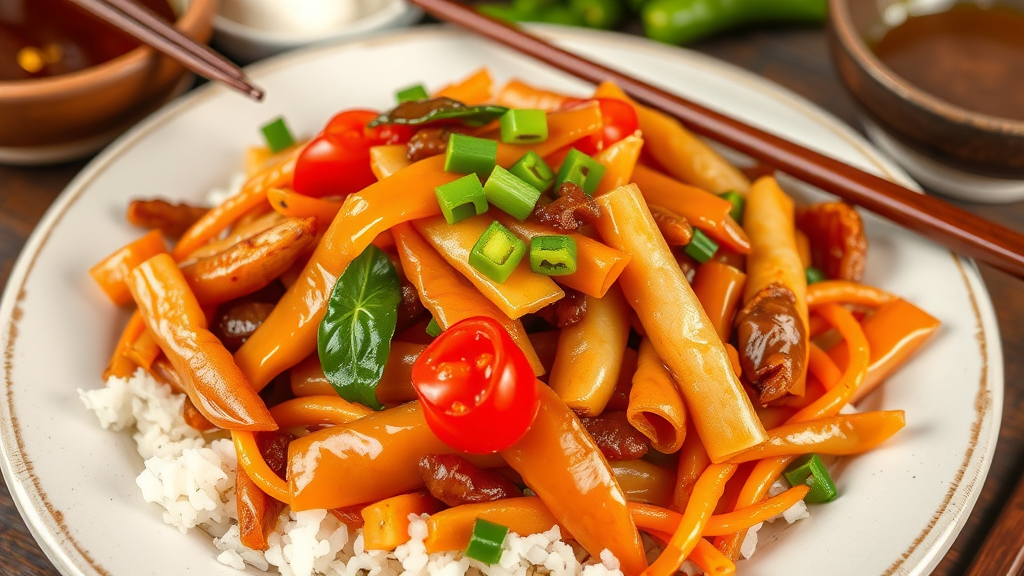


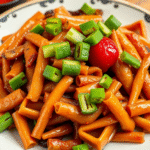
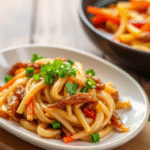
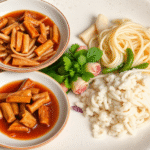
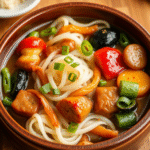
Leave a Reply